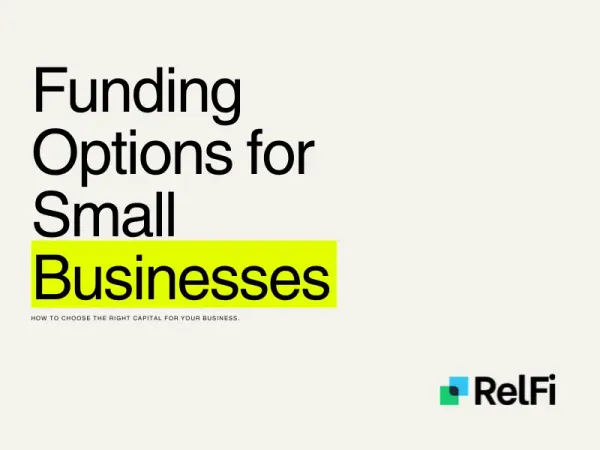The Cost of Doing Nothing: How Inaction Could Be the Most Expensive Decision for Your Business

In business, action is often associated with risk—launching a new product, hiring additional staff, or taking on financing can feel like uncertain leaps. But what’s less discussed, and arguably more dangerous, is the cost of doing nothing. Inaction, whether it’s delaying investments, avoiding financing, or ignoring market trends, comes with its own set of risks that can quietly erode a business’s potential.
The cost of doing nothing isn’t always immediately apparent. There’s no line item for missed opportunities or stagnant growth. Yet over time, these hidden costs can accumulate, leaving a business struggling to keep up with competitors or adapt to changing circumstances. Let’s explore how inaction can become the most expensive decision a business owner makes—and how to avoid it.
The Invisible Price Tag of Inaction
Doing nothing often feels safe. It’s easier to maintain the status quo than to invest time and resources into a new initiative. But in reality, inaction can lead to consequences that are anything but safe.
One of the most significant hidden costs is opportunity cost—the missed potential of what could have been achieved had you acted. For example, delaying an investment in new equipment might save money upfront, but it could also limit your ability to meet growing demand, costing you revenue and market share in the long run. Similarly, avoiding financing might keep your balance sheet clean, but it can also prevent you from capitalizing on opportunities that require immediate capital, like expanding to a new location or launching a product line.
Another cost comes in the form of competitive stagnation. While your business hesitates, competitors may be acting boldly, investing in technology, and capturing market share. By the time you decide to act, the playing field has shifted, and catching up may require even more resources than if you had acted earlier.
Key Areas Where Inaction Costs Businesses
- Investments in Growth: Holding back on growth-oriented investments—such as hiring, upgrading infrastructure, or expanding operations—may seem like a prudent move to conserve cash. However, growth doesn’t wait. A competitor willing to take calculated risks will likely outpace you, leaving you to compete for a shrinking share of the market.
- Adapting to Market Trends: In today’s fast-changing world, staying relevant means staying adaptable. Ignoring trends, such as the shift to e-commerce or the adoption of sustainability practices, can make your business appear outdated. The longer you wait to pivot, the more expensive and challenging the transition becomes.
- Accessing Capital: Many business owners avoid financing due to fear of debt. But the right type of financing, used strategically, can act as a catalyst for growth. Hesitating to secure funding when it’s needed can result in missed opportunities to invest in areas that drive revenue or efficiency.
- Technology Upgrades: Technology evolves rapidly, and businesses that fail to keep up risk becoming obsolete. Whether it’s automating processes or investing in a customer relationship management (CRM) system, delaying these decisions often leads to higher costs down the road, as inefficiencies grow and competitors gain an edge.
The Mindset Shift: From Risk Aversion to Strategic Action
Addressing the cost of inaction requires a shift in perspective. Instead of viewing every decision through the lens of immediate expense, consider the long-term value it can generate. Every decision—whether to act or to wait—should be evaluated for its potential impact on your business’s trajectory.
Start by asking yourself:
- What opportunities am I missing by staying in my comfort zone?
- How could taking a calculated risk position my business for greater success?
- If I delay this decision, will the cost of acting later outweigh the cost of acting now?
Why Strategic Financing is Key
Financing often plays a crucial role in overcoming the inertia of inaction. It provides the resources needed to seize opportunities, address challenges, and maintain competitive momentum. For example, securing a line of credit can help you act quickly when an unexpected opportunity arises, while working capital financing can provide the liquidity needed to expand or innovate without straining cash flow.
At RelFi, we understand that hesitation often stems from uncertainty. That’s why we focus on building financial relationships, not just offering solutions. Our goal is to help business owners make informed decisions that balance today’s needs with tomorrow’s potential.
Take Action Today
The cost of doing nothing may not appear on your balance sheet, but it’s real—and it’s rising. By recognizing the hidden risks of inaction and embracing a proactive approach, you can position your business for growth, resilience, and long-term success.
Don’t let hesitation hold you back. Start the conversation today, and let RelFi help you take the steps needed to turn potential into progress. Your future is waiting—let’s make it happen.





